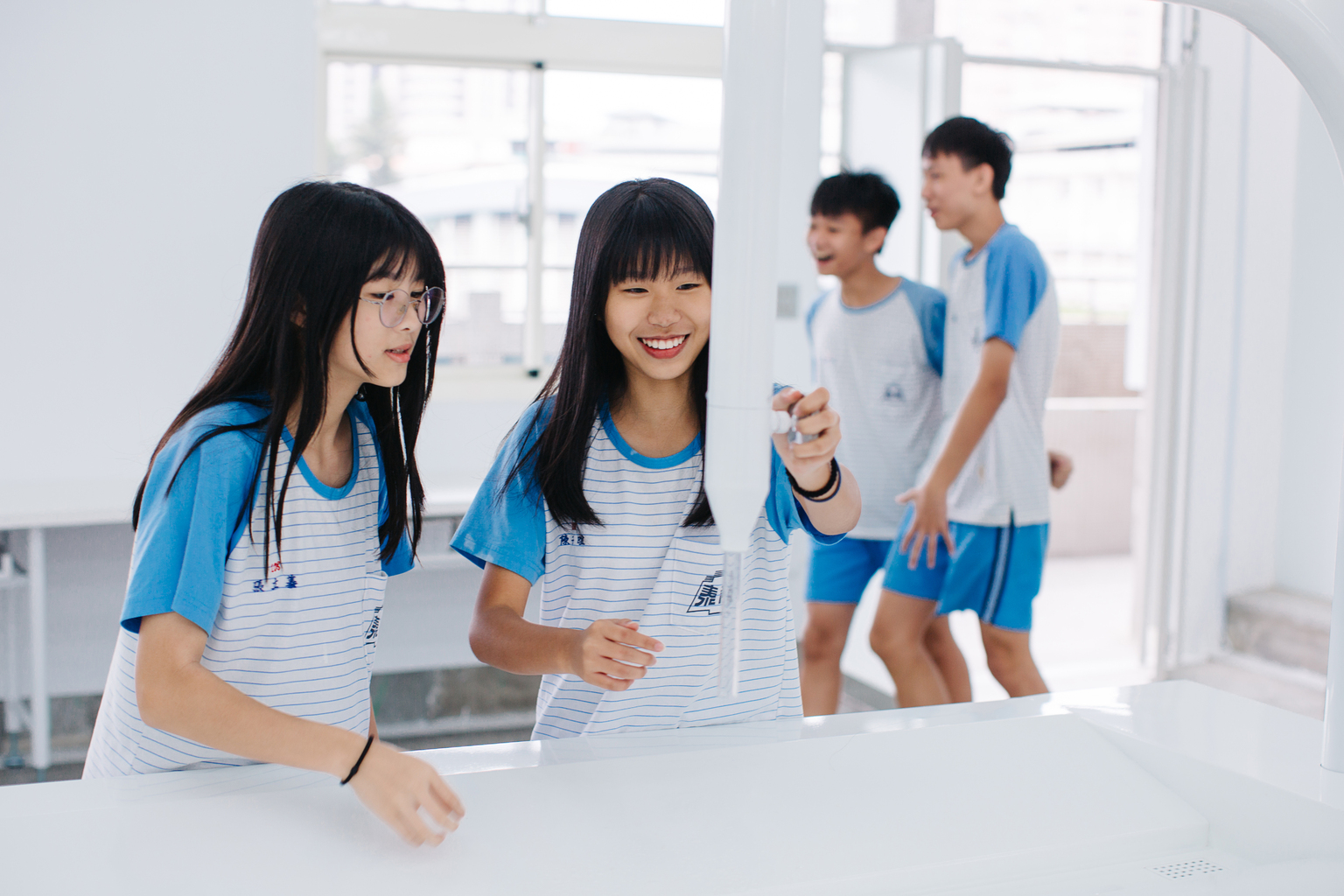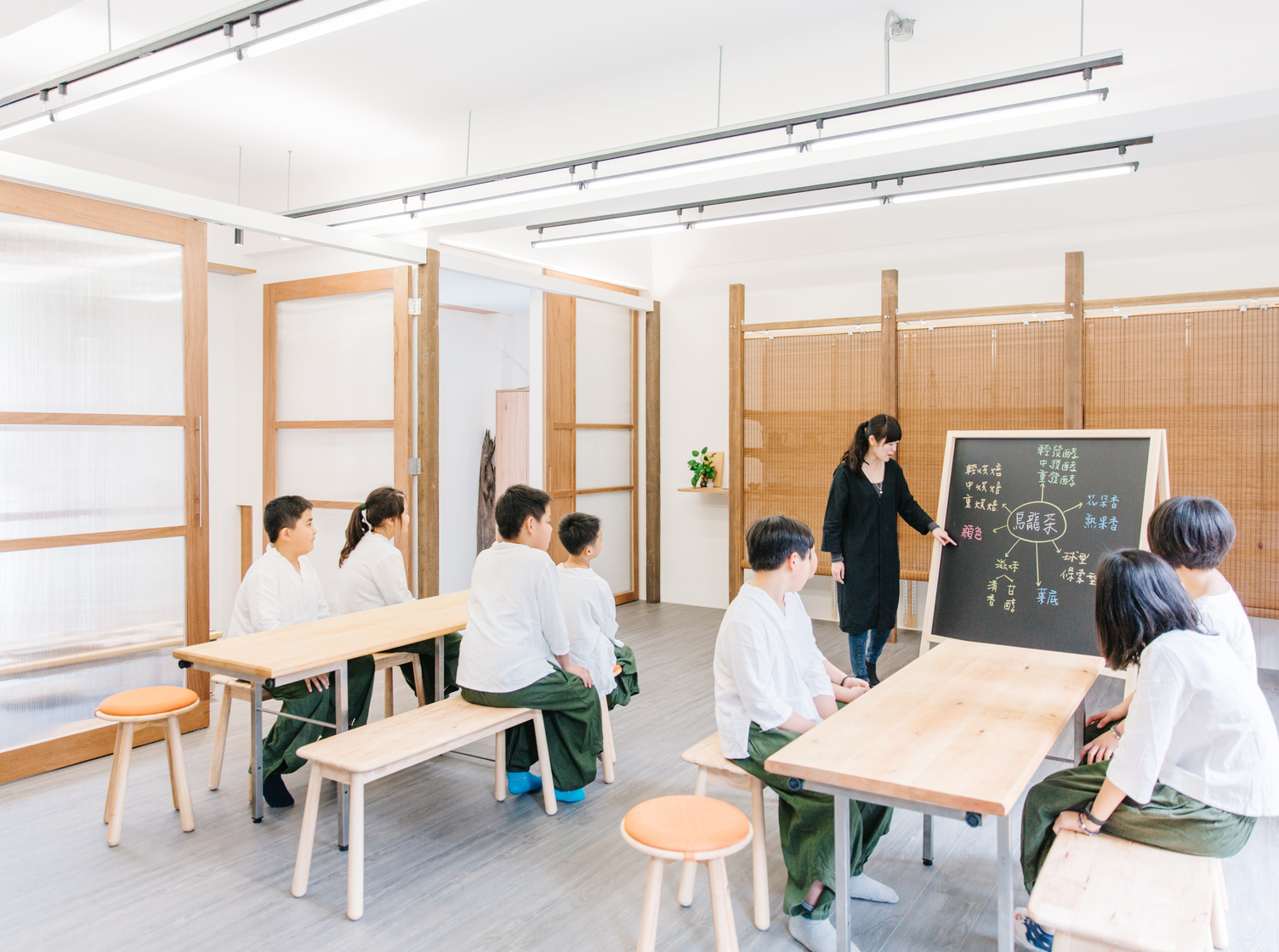Aesthetics Classroom Dedicated to Teaching Triggers Curiosity and Perceptions of Students
- Exclusive Interview with Mr. Luo Jun-Yi of XinTai Junior High School
“We often talk the talk, hoping children can learn design thinking and attend aesthetics class; but in terms of space, are we prepared?” Mr. Luo Jun-yi, art teacher of XinTai Junior High School, asked himself.

Build an Unconventional Classroom to Ignite Students’ Perceptions through Design
This question originated from one day in 2020. At the time, the curriculum section chief of XinTai Junior High School received the official letter of “Design Movement on Campus” executed by TDRI under the commission of Ministry of Education, and grew interested int the project. The section chief discussed with Luo Jun-yi about which space on campus was to be renovated?
“At the time, I was already thinking that XinTai Elementary School continued to offer aesthetics class, but the space was just an early art classroom, and not designed specifically for the class,” said Luo. “So, I hoped to ignite students’ perceptions in an unconventional space by building a classroom specifically for the class.”
With this in mind, the school submitted application and was successfully selected from a pool of schools. Moreover, at the selection meeting convened by TDRI, the school reached out to diesgn team “CloudForm Lab,” hoping they could transform the old chemistry and physics classroom into an “aesthetics lab.”


Not Just “Aesthetics Lab,” but a Creativity Incubator that Presents Unlimited Possibilities
For the aesthetics lab to truly respond to the teaching needs of the aesthetics class, when “CloudForm Lab” designed the space, Luo also summarized the spatial needs according to the curriculum, and offered the design team his suggestions and feedbacks: first, the aesthetics lab should be “a space that leaps out of the page,” which is mainly white in color, allowing students to add colors to this space that resembles a pure canvas; for students to outline their body on the whiteboard, the classroom must be equipped with a ceiling to floor whiteboard; because the students needed access to water for painting, it would be nice for the classroom to have faucets and a bar area; the storage space would be the most important for students to put away various art tools and supplies; for convenient exhibition of students’ works, the lighting in the classroom must meet the demands of both teaching and exhibition …
“After we proposed our needs, ‘CloudForm Lab’ would also raise some questions: ‘Do you really need so much storage room?’ ‘Do you use these art supplies long term?’ Through these questions, we also discovered that some art supplies were for one-time use only, and perhaps did not need to be stored in the classroom for a long period of time,” said Luo Jun-yi. Also, through this kind of discussions, the school offered first-hand observations at the site of education; the design team brought viewpoints that broke the existing framework; TDRI and advisors provided different ideas regarding the design proposal, and played the communicating and balancing role between the school and the design team, so that teaching needs and design creativity could be satisfied and utilized in “Aesthetics Lab.”
Through repeated discussions and brainstorming by the three sides, an unprecedented “Aesthetics Lab” was born at XinTai Junior High School. Now, when people walk into Aesthetics Lab, the first thing they see is the ceiling to floor whiteboard; as they turn their attention to the center of the classroom, the “Aesthetics Lab Island” that combines the functionalities of storage space and sink has four tabs in the four primary colors of CMYK that stretch down from the ceiling. When they look down, the floor also features lines in the four primary colors of CMYK drawn in accordance with the golden proportion. Unlike conventional art classrooms in the past, Aesthetics Lab is more like a white box of exhibitions, as well as a creativity incubator presenting unlimited possibilities, where various eastern eggs are hidden, waiting for students to explore with excitement.


Starting from just One Classroom to Make Education Sites a little bit Bolder
“Actually, practically speaking, art classroom and Aesthetics Lab have overlapping basic needs, but Aesthetics Lab is different because it brings students physical perceptions ordinary classrooms cannot,” said Luo Jun-yi. “In think kind of spaces, students will automatically turn on observation and perception, giving rise to many questions regarding ‘why is it designed this way?’ and this type of questions mark the starting point of thinking.”
In fact, this kind of design is not just students’ starting point of thinking, but also opens up new perspectives for the school. After all, the unconventional design of “Aesthetics Lab” has earned it the recognition of the 2021 Golden Pin Design Award, and garnered the attention of domestic and overseas media, helping more schools to discover that classrooms can be like this. Aesthetics Lab is not just the design experiment of one classroom, but a space that opens up students’ perceptions, and a reminder to teachers with passion: “We can be bolder when it comes to education sites.”



